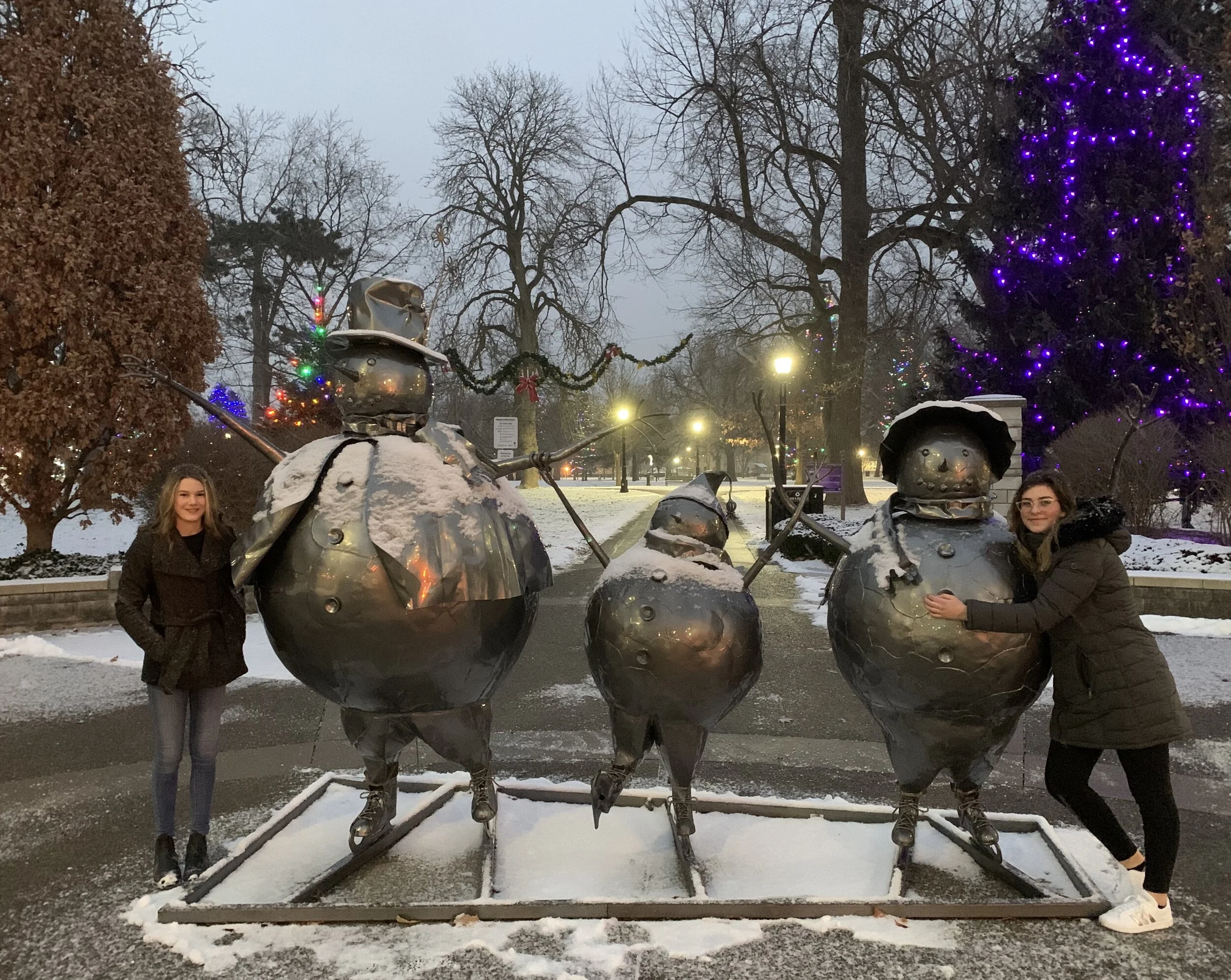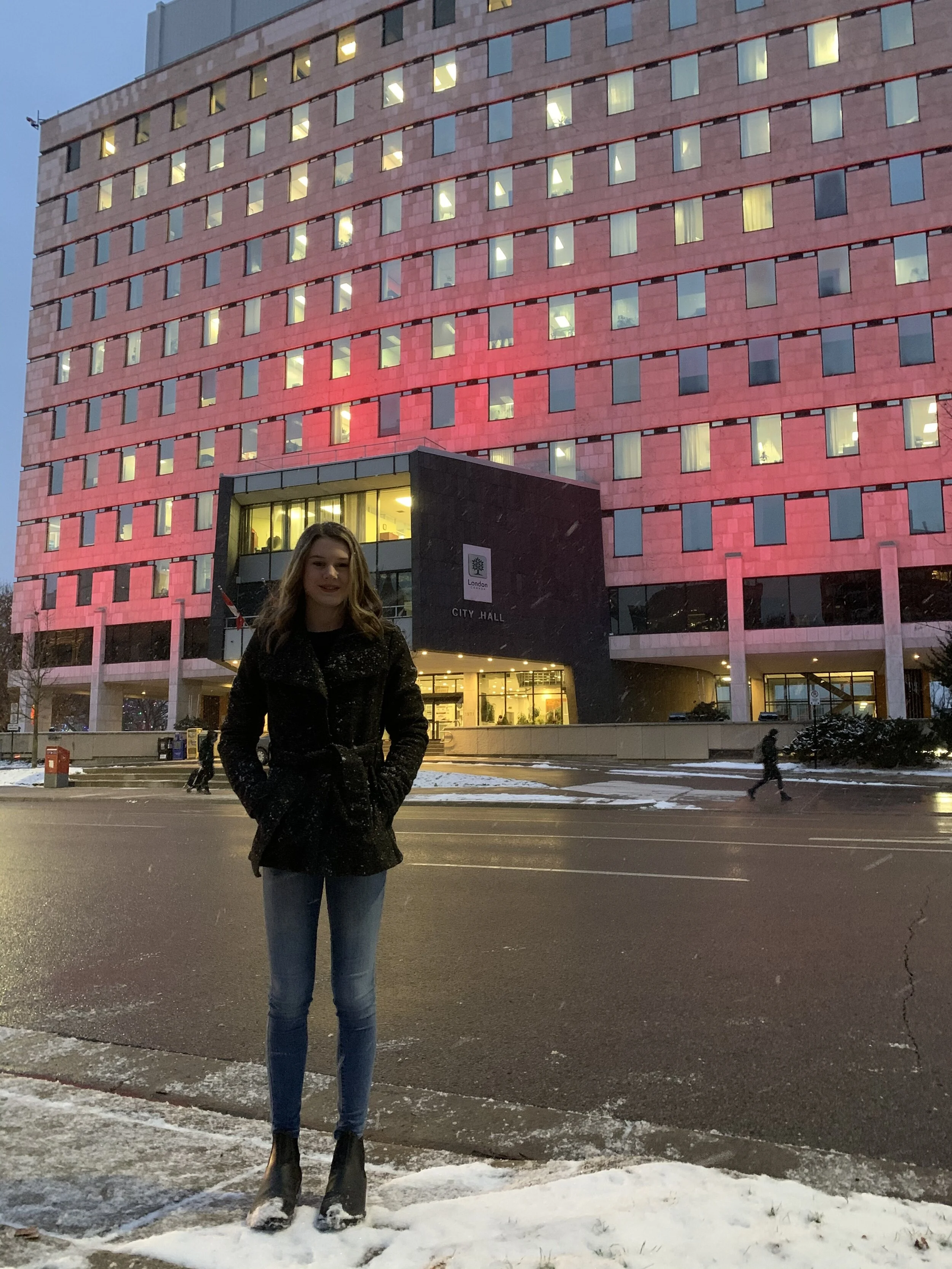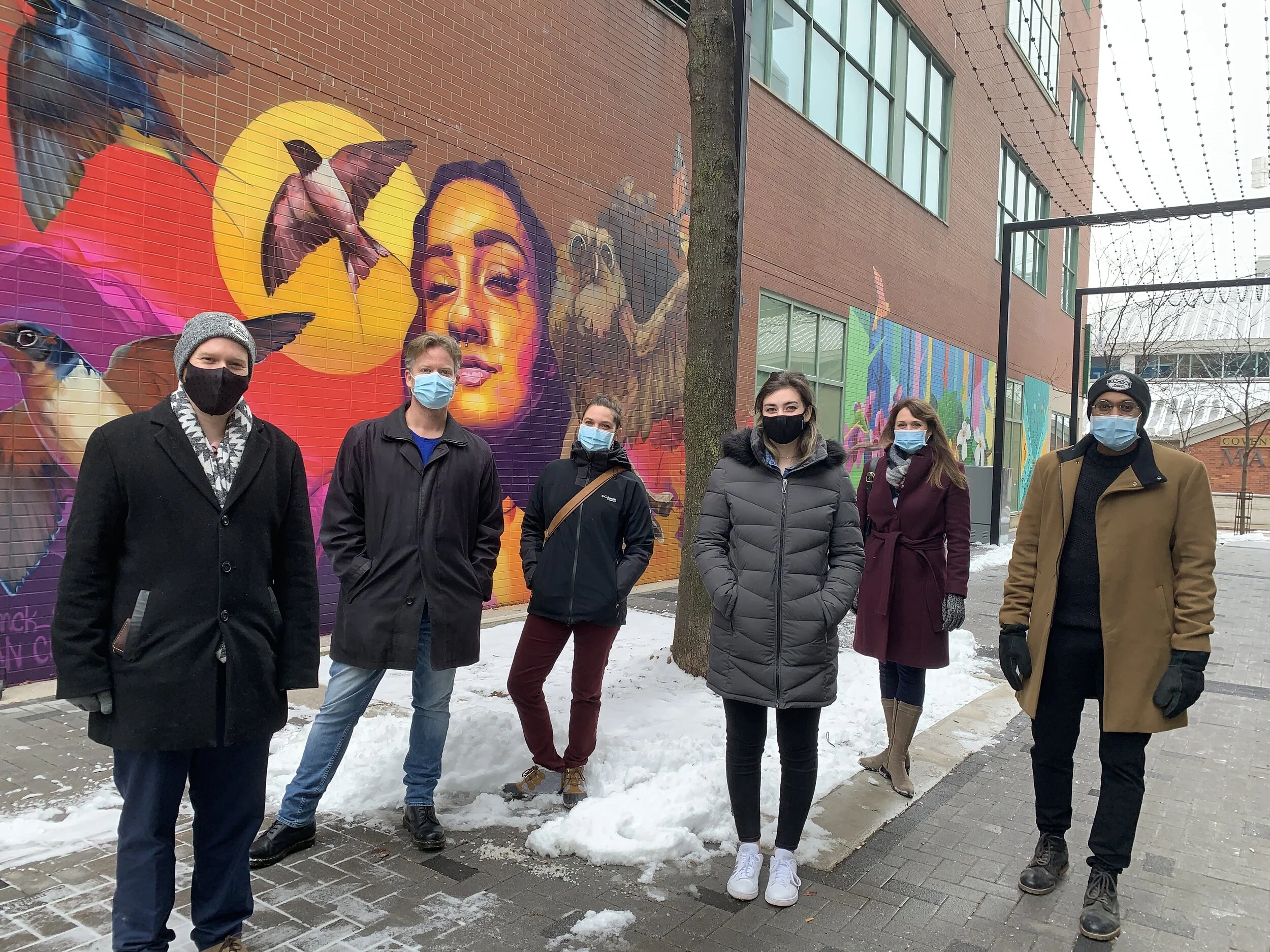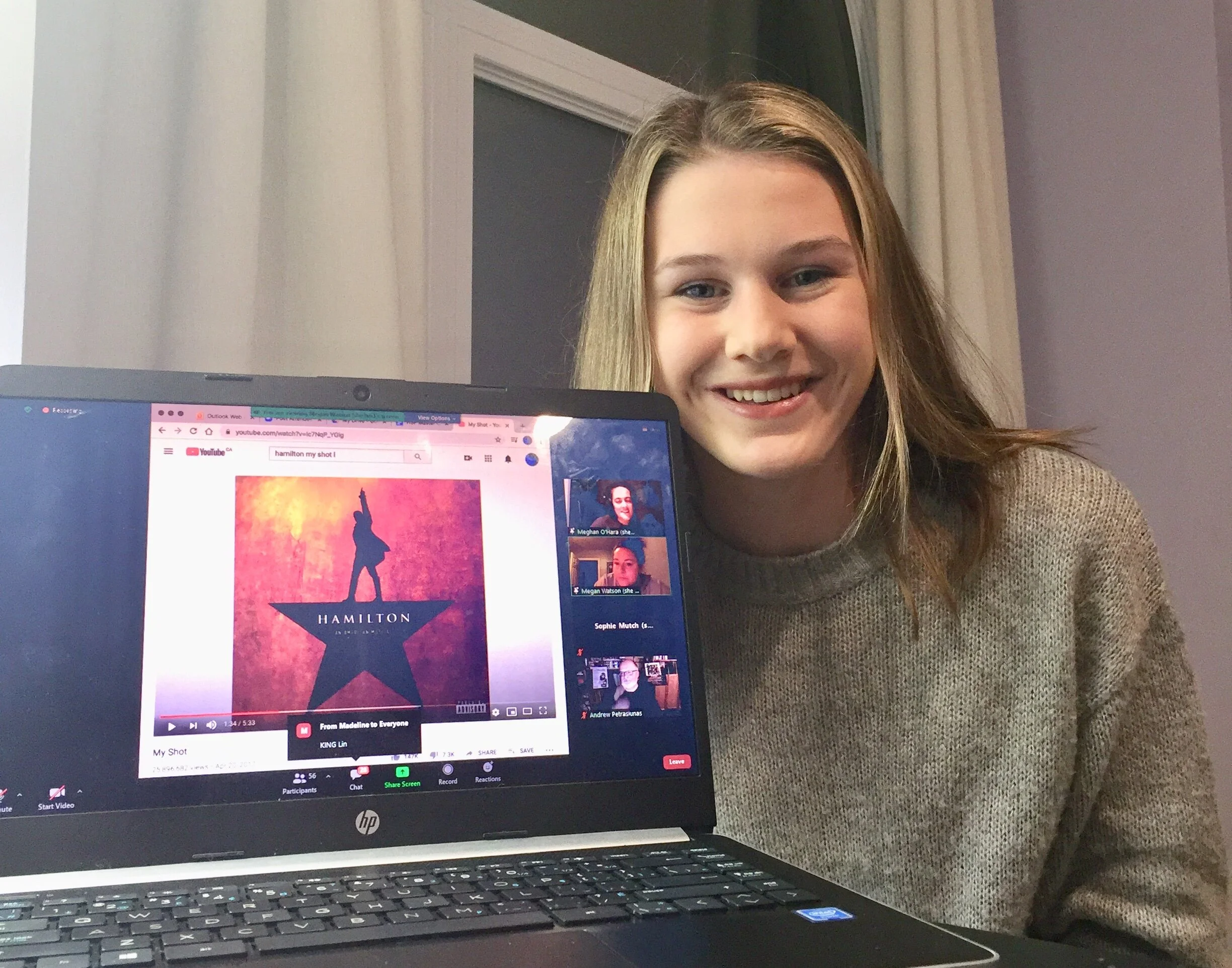This is the Time to Involve Youth
Sophie Mutch and Emily Stage of young & free press recently visited Victoria Park in downtown London and noticed the new snow-family at the southwest entrance. During the pandemic, we have focussed a lot on new installations and artwork at street-level as we spend more time outdoors exploring local neighbourhoods. How will our communities look after the pandemic? Sophie wrote the article below to think through how young people could be involved in imagining how to rebuild with a view to the future.
As the dream of a vaccine to lower the number of COVID-19 cases becomes a reality, we have to wonder how urban areas that have been heavily affected by closures will recover. Lockdowns and other restrictions have been devastating. Many people have lost employment and affordable housing is harder to find, therefore raising homelessness rates. We are just starting to grasp the impact of the shift to working and learning at home.
The arts community is struggling: small venues like Call the Office in London have been forced to close, and even large venues like the Grand Theatre and the Stratford Festival -- both of which are essential to the local and regional economies – have been hit hard. Small businesses are crucial in so many ways, including employing local youth and post-secondary students; often, they pave the way to a feeling of community and sense of belonging. With all these changes happening, we wanted to explore how youth can be involved in rebuilding communities across southwestern Ontario during and after the pandemic.
The younger generation will feel the impact of any changes made for the longest amount of time, and should be included in current decision-making. Many Members of Parliament and Members of Provincial Parliament offer opportunities for youth to participate in Youth Councils, but many are currently paused due to the pandemic. In what may be one of the most important times for youth to be heard, there are few, if any, opportunities that give a platform for adolescents to voice their ideas and opinions on rebuilding Ontario post-pandemic.
There are many ways to engage young people, and many want to be engaged. During the pandemic, we have seen an increase in activism about issues like racial justice and climate change. Teenagers and young adults want to be heard and also act on important matters. Adolescents can become very engaged when presented with the opportunity to work on a project they are invested in emotionally and intellectually. With almost everything shut down and schedules being more open, this is a great opportunity to develop programs that benefit both youth and the community. We need to encourage short and long-term thinking.
Students could be offered a platform to pitch ideas on how to rebuild communities as we emerge from the pandemic. Municipalities and other local organizations could assemble groups of adolescents that meet weekly or monthly in a virtual setting to discuss how to rebuild. This could boost mental health by helping teenagers to feel heard and also offering an opportunity to contribute. This could even continue when we return to ‘‘normal’’ and the groups could discuss how cities, towns and rural areas could improve in more general terms. Through young & free press, we are developing this type of platform in collaboration with the STEAM Centre and Thames Valley District School Board – check out the STEAM Community Studio.
Our communities would benefit by engaging more voices and drawing out forward-thinking ideas. The participants will benefit by feeling a sense of togetherness while we are all apart. Social interaction with new people is necessary, especially for adolescents, and becoming harder to arrange through the pandemic. While virtual meetings are definitely not the best-case scenario, they fill some of the social void that many of us are currently experiencing.
Students need volunteer hours, too. These opportunities are much scarcer due to all the closures. Even with the Ministry of Education lowering the mandatory number of volunteer hours for 2021 graduates, many may still have a hard time reaching the 20 required hours. Municipalities could help by letting students gain volunteer hours through contributing ideas. This arrangement would benefit all involved, generating new possibilities for young people and the community as a whole.
By engaging students directly in local affairs, we can encourage youth participation in local economies and perhaps uncover a few great ideas. Some of our democratic processes have also been diminished during the pandemic. Perhaps we can take this opportunity to develop new platforms for generating conversations with youth and keeping our leaders accountable.





